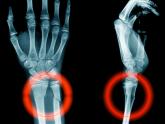Opinion
Nocturnal Hot Flashes and Alzheimer’s Risk
- Author:
- Andrew M. Kaunitz, MD
Study results provide further evidence to support the possibility that agents that reduce nighttime hot flashes (including hormone therapy) may...
Opinion

The safety of vaginal estrogen in breast cancer survivors
- Author:
- Andrew M. Kaunitz, MD
Concomitant use of vaginal estrogen and aromatase inhibitors was associated with a higher risk for breast cancer recurrence than was use of...
Article

Defending access to reproductive health care
- Author:
- Robert L. Barbieri, MD
- Barbara Levy, MD
- Andrew M. Kaunitz, MD
- David G. Mutch, MD
- James Simon, MD
- Amy Garcia, MD
- Cheryl Iglesia, MD
- Errol Norwitz, MD, PhD, MBA
- Jaimey Pauli, MD
- David Jaspan, DO
- Iris Krishna, MD, MPH
- Mark Trolice, MD
- Lubna Pal, MBBS, MS
- Jan Leslie Shifren, MD
- Sarah Prager, MD, MS
- Charles Miller, MD
- Eve Espey, MD, MPH
- Constance Bohon, MD
- Melissa Kottke, MD, MPH, MBA
- Sinha Sangeeta, MD
- Patrick Woodman, DO
If precedents set in Roe v Wade are overturned, ObGyns have several immediate and long-term challenges
...Opinion
Contraception for women taking enzyme-inducing antiepileptics
- Author:
- Andrew M. Kaunitz, MD
Because reproductive-aged women represent a population in which migraines are prevalent, clinicians need guidance to help women taking topiramate...
Opinion

Addressing women’s concerns about the J&J vaccine
- Author:
- Andrew M. Kaunitz, MD
It may be reasonable to steer high-risk reproductive-age women away from the J&J vaccine in favor of the Moderna and Pfizer vaccines, if these...
Article
How does long-term OC use affect breast, ovarian, and endometrial cancer risk?
- Author:
- Andrew M. Kaunitz, MD
Analysis of data from a large cross-sectional cohort and national databases that included almost 257,000 women indicates that...
Article
Which hormonal management approach for women with premature ovarian insufficiency is best for bone?
- Author:
- Andrew M. Kaunitz, MD
The use of combined oral contraceptives (COCs) in 119 women with a mean age of 30.3 years who had premature ovarian...
Article
How effective is screening mammography for preventing breast cancer mortality?
- Author:
- Andrew M. Kaunitz, MD
An analysis of observational data from 76,630 women included in a breast cancer registry in Victoria, Australia, from 1982 to...
News
Prioritizing ambulatory gynecology care during COVID-19: The latest guidance
- Author:
- Andrew M. Kaunitz, MD
ACOG gives examples of which patients need in-person appointments, telehealth visits, or visits that should be deferred.
Article
ACOG offers guidance on optimizing patient care in the midst of COVID-19
- Author:
- Andrew M. Kaunitz, MD
Article
Two cases of genital pruritus: What is the one diagnosis?
- Author:
- Kerrie G. Satcher, MD
- Stephanie J. Carstens, MD
- Andrew M. Kaunitz, MD
Article

What is the association of menopausal HT use and risk of Alzheimer disease?
- Author:
- Andrew M. Kaunitz, MD
Women with Alzheimer disease (AD) were more likely to have used postmenopausal systemic hormone therapy (HT)...
Article

Does the type of menopausal HT used increase the risk of venous thromboembolism?
- Author:
- Andrew M. Kaunitz, MD
Yes, according to a case-control study that analyzed data from 2 large UK databases in which 80,396 women aged...
Article

How does HT in recent and 10+ years past menopause affect atherosclerosis progression?
- Author:
- Andrew M. Kaunitz, MD
Secondary analysis of ELITE trial data among 596 women in early (<6 years) and late (≥10 years) postmenopause...
Article

To prevent fractures, treating only women with osteoporosis is not enough
- Author:
- Andrew M. Kaunitz, MD
In older osteopenic women, intravenous zoledronic acid effectively prevents fragility fractures.
